
 |
||||||||
|
|
||||||||
Swordsmen and Swordsmiths - Restoring an Ancient RelationshipBy
John Clements
| |||||||||||||||||
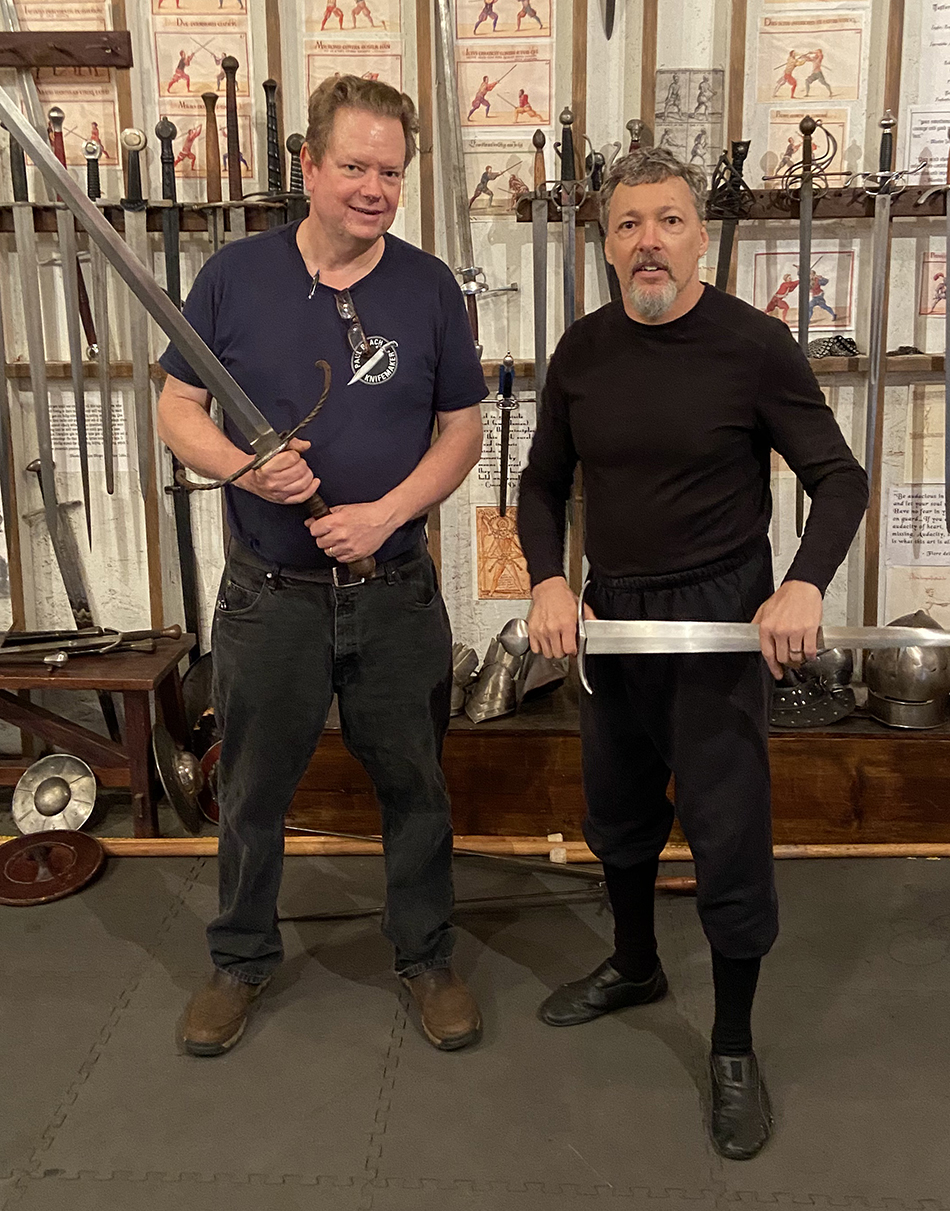 Bladesmith Paul Brach
from THC's Forged in Fire |
I have a tremendous respect for swordsmiths and bladesmiths. Without their efforts I would still just be using crude inaccurate replicas, inferior training blunts, wooden substitutes, and be completely unable to have a decent sharp blade to use in target practice. Their work is what has allowed us to more deeply and authentically explore the recovery of lost fencing methods. Not only that, but their capacity by their own hands to turn primal ore into a magnificent weapon that is also a work of art is, to me, mind-boggling. It borders on the magical and I can readily understand how at one time historical swordsmen could have viewed it as such. Not being a craftsman or smith myself, it’s fascinating to me. As I often like to say, I am the "fighter pilot, not the aerospace engineer;" the "racing driver, not the auto mechanic." I look at swords as fighting implements; objects for dealing and preventing violence using the trusted principles of close combat. They are unique instruments for developing personal skill and expressing individual prowess. I approach my understanding for their dimensions and the physical geometry of their component parts from the point of view of why they were conceived, how they were employed, and why they changed over time. But this doesn't keep me from appreciating their aesthetics, their artistry, and their workmanship —even if I don't fully understand the science and talent that goes into making them. |
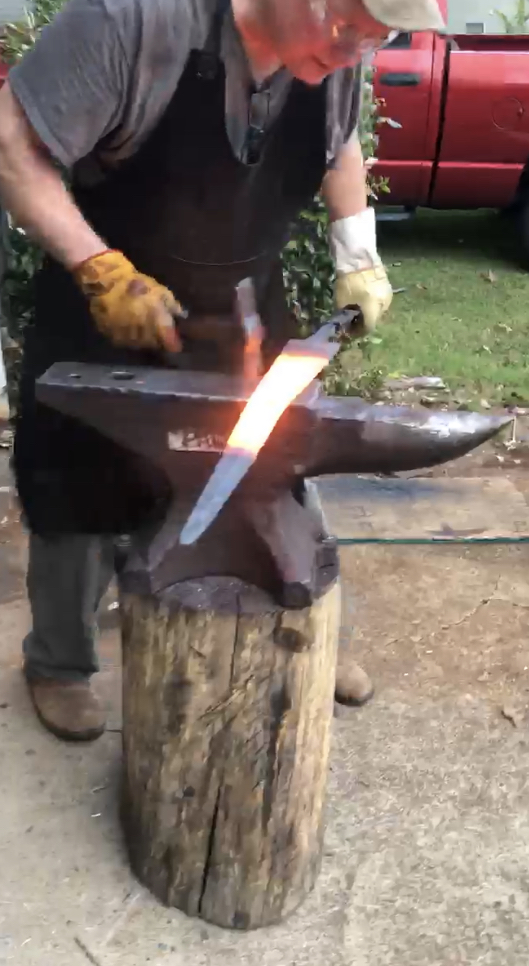 That
being said, it also makes me the most severe and uncompromising of
critics. And I have learned that can be very intimidating to makers and
smiths. Most are just not used to an expert who can pick up their
product and instantly determine some aspect of its proportions or weight
or center of gravity is so off as to render it useless for its original
purpose. They rarely (if ever) encounter in person someone adeptly
expert at handling their creations in a manner that they have never
witnessed or were aware could even be performed (…but that for me, is an
almost everyday routine).
That
being said, it also makes me the most severe and uncompromising of
critics. And I have learned that can be very intimidating to makers and
smiths. Most are just not used to an expert who can pick up their
product and instantly determine some aspect of its proportions or weight
or center of gravity is so off as to render it useless for its original
purpose. They rarely (if ever) encounter in person someone adeptly
expert at handling their creations in a manner that they have never
witnessed or were aware could even be performed (…but that for me, is an
almost everyday routine).
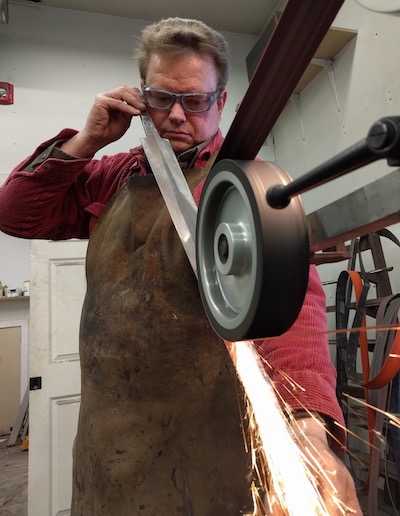 So,
I understand a critical evaluation of functionality can be
disconcerting, unsettling, discouraging, and even insulting. It's like a
food critic dissatisfied with a chef's dish. After all, their
perspective is one of trying to redevelop lost technologies and artistry
while honing their own skill and technique. In that regard though, we
are kindred spirits. For I do the same in my craft of wielding those
very tools. But the ancient synergy of the relationship between makers
and users has long been severed. Neither is actually doing something
that will ever be put to earnest use in the originally intended
historical manner and neither has survival in combat as the primary
necessity for what they do.
So,
I understand a critical evaluation of functionality can be
disconcerting, unsettling, discouraging, and even insulting. It's like a
food critic dissatisfied with a chef's dish. After all, their
perspective is one of trying to redevelop lost technologies and artistry
while honing their own skill and technique. In that regard though, we
are kindred spirits. For I do the same in my craft of wielding those
very tools. But the ancient synergy of the relationship between makers
and users has long been severed. Neither is actually doing something
that will ever be put to earnest use in the originally intended
historical manner and neither has survival in combat as the primary
necessity for what they do.
To reestablish that ancient relationship today then means that each
of us in our respective fields must become as knowledgeable and skillful
as feasible. And I believe that is not really possible for one to
achieve without the other. Without expert swordsmen demanding excellent
weapons and providing feedback on their performance, swordsmiths miss a
core aspect of their craft. (This is why you see so many "art pieces"
made that would be virtually useless as practical weapons.) To use an
analogy, a craftsman might make a guitar that may look good and seem to
sound right, but it takes a talented player to really determine if good
music is capable of being made with it.
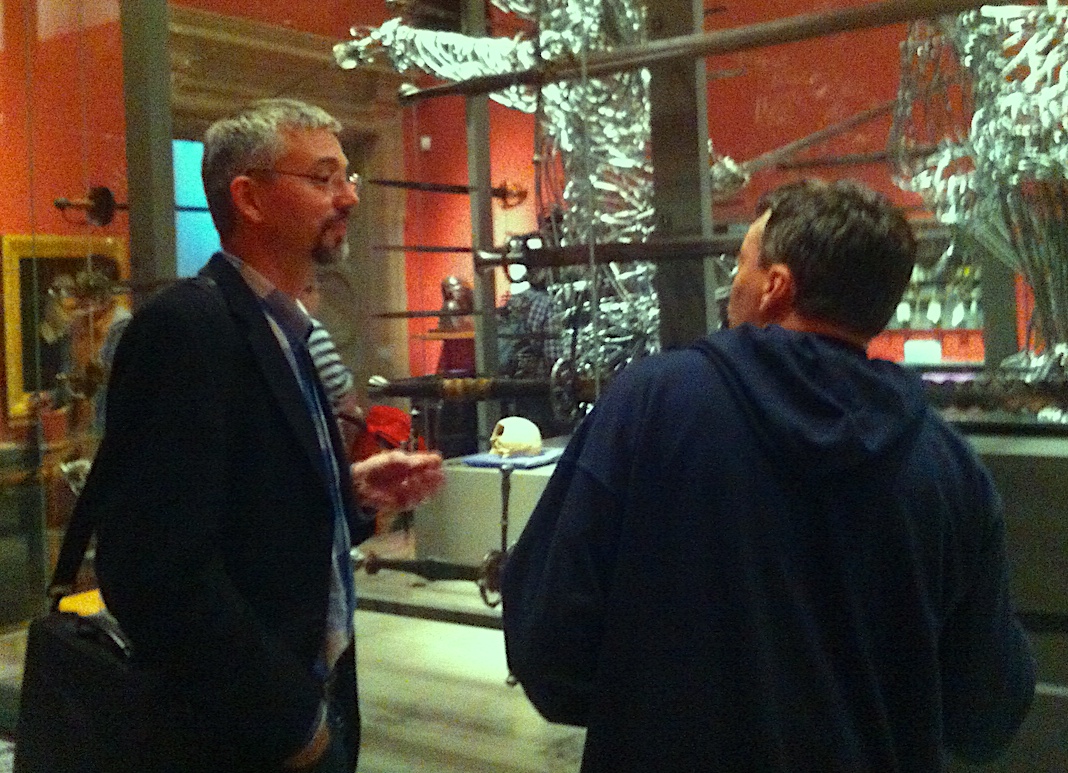 |
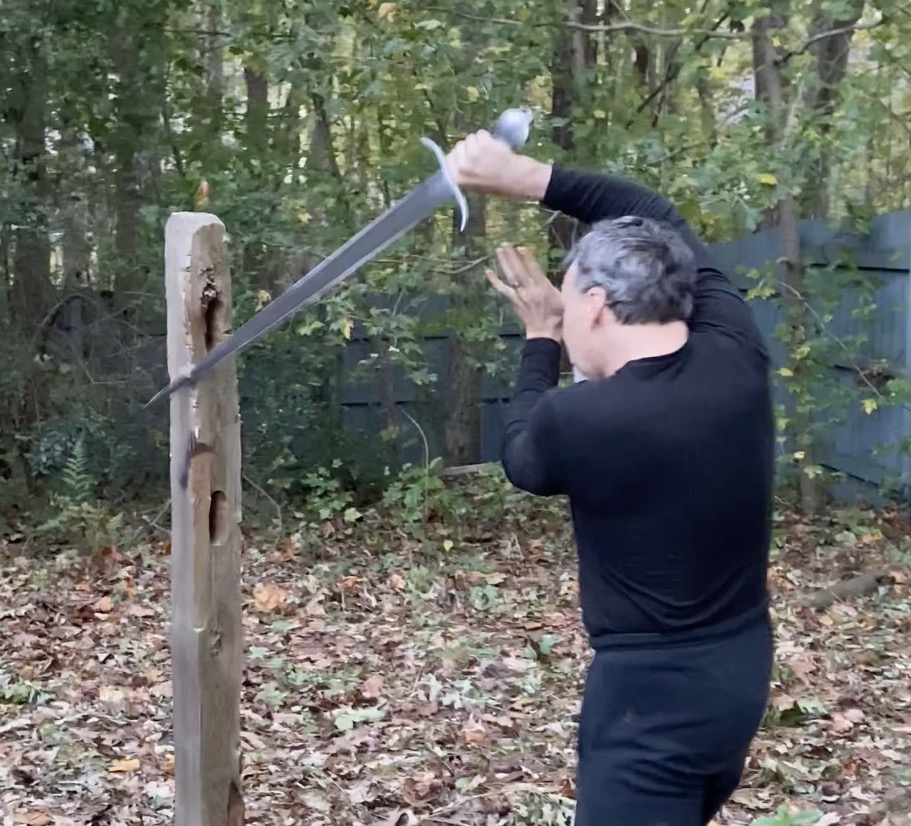 Over
my years of having handled hundreds of original specimens, trained
vigorously in the authentic techniques and method using accurate
reproductions, and exercised at target practice with all manner of
sharps, I have gained perspective in how each of these activities
informs the others. In consulting and interacting with makers, both
professional and amateur, certain key areas of where our mutual love of
swords intersect have emerged to reveal reoccurring gaps in knowledge.
I've come to learn that harmonizing the difference in our perspectives
really comes down to addressing just a handful of areas:
Over
my years of having handled hundreds of original specimens, trained
vigorously in the authentic techniques and method using accurate
reproductions, and exercised at target practice with all manner of
sharps, I have gained perspective in how each of these activities
informs the others. In consulting and interacting with makers, both
professional and amateur, certain key areas of where our mutual love of
swords intersect have emerged to reveal reoccurring gaps in knowledge.
I've come to learn that harmonizing the difference in our perspectives
really comes down to addressing just a handful of areas:
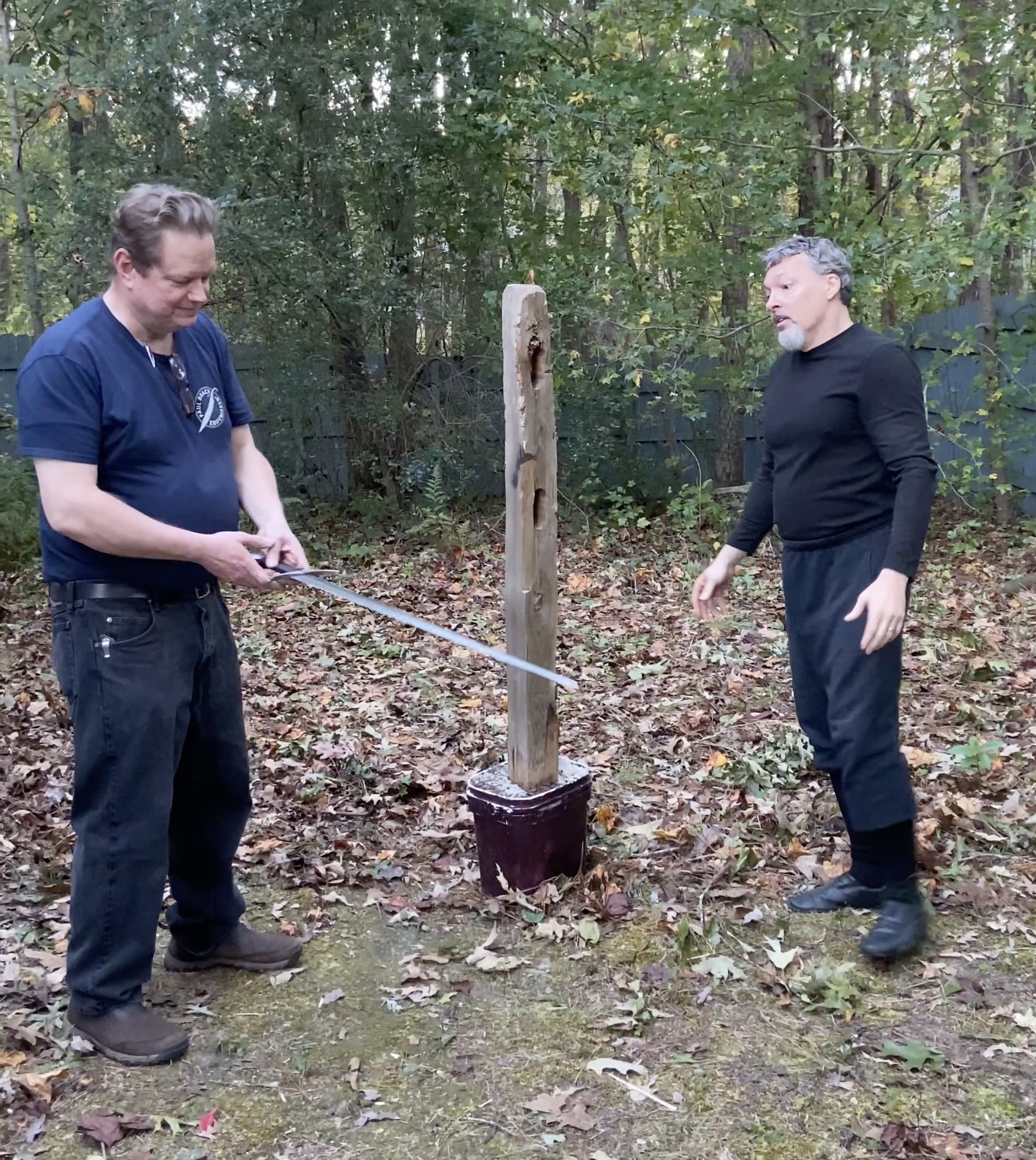 There
is one fundamental consideration to keep in mind: never think of sword
designs (or their associated fighting methods, for that matter) as
existing on their own in a vacuum, but only in terms of the other
weapons and armors they were intended to deal with. In that regard, when
it comes to synergy of form and function, the forcible clash of steel
in trained hands is as different from the bashing of steel in untrained
hands as is the sound of a violin played by an untrained non-musician
—even if the latter is the violin maker themselves.
There
is one fundamental consideration to keep in mind: never think of sword
designs (or their associated fighting methods, for that matter) as
existing on their own in a vacuum, but only in terms of the other
weapons and armors they were intended to deal with. In that regard, when
it comes to synergy of form and function, the forcible clash of steel
in trained hands is as different from the bashing of steel in untrained
hands as is the sound of a violin played by an untrained non-musician
—even if the latter is the violin maker themselves.Swordsmiths today will pretty do whatever they want on their own
regardless of the needs or opinions of today's swordplay practitioners.
Some makers appreciate input from informed swordsmen, but nonetheless
they are understandably still focused on the concerns immediate to their
craft --which is getting the shape, the metallurgy, the heat-treating,
and tempering correct. So, the science and overall aesthetics
of a piece is what they're able to evaluate with their peers. Whereas
for users, we look and say, “Nice sword, but how's it handle?" Let me
play with it. If it's sharp then let me cut with it. Is it a training
blunt? Let me ward off blows and work the pell with it to discover how
it holds up. All that comes down to matters of practical utility --the
intended purpose of any sword. And yes, this does mean smiths must on
occasion subject their pieces to some reasonable stress and trauma.
Performance
issues of functionality, while paramount to swordsmen of any
era, are of much less, if any, concern to the modern craftsman. This
must change. Good sword design and good sword making is ultimately a
matter of creating a tool that optimizes the techniques
for offense and defense that a combatant employs to deliver as
well as prevent
wounds. From the point of view of historical function, it's that
simple. Keeping focus on this in no way diminishes the artistry or
technical ability of a sword maker. Rather, it showcases their skill in
the highest possible manner. It was the very essence of the ancient
relationship between swordsman and swordsmith.
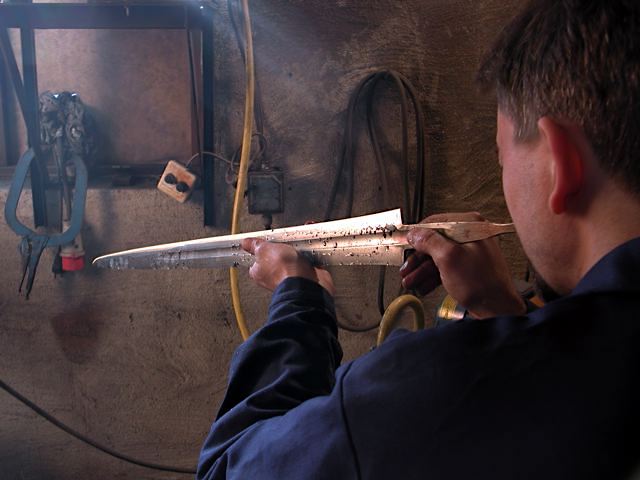 |
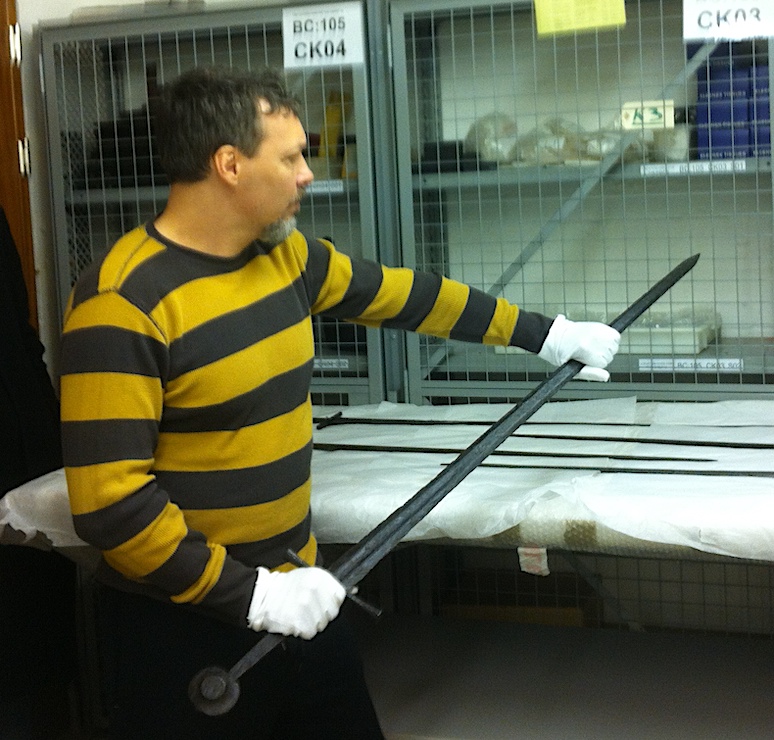 |
||
| Though
they may approach the objects of their mutual subject from opposite
directions, today's swordsmiths and today's swordsmen are no less
equally genuine --despite one making weapons that will never see real
use and the other practicing techniques that will not either. |
|||
*See also If I Had A Hammer
|
|||
2-2021
*Appreciation to my friend, blades-smith Paul Brach, for sharing his images
|
|
|||
|
|
|||
|
|||